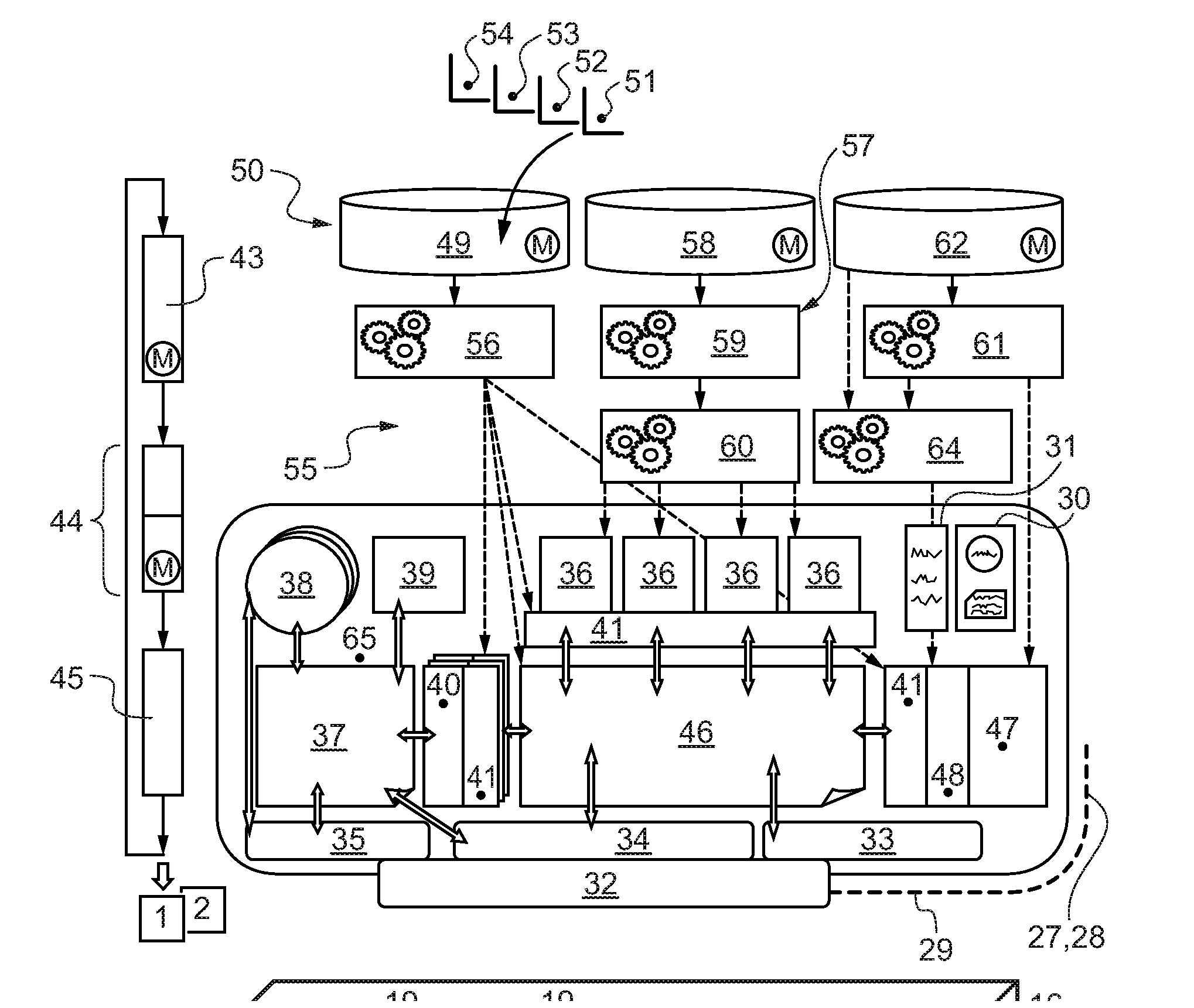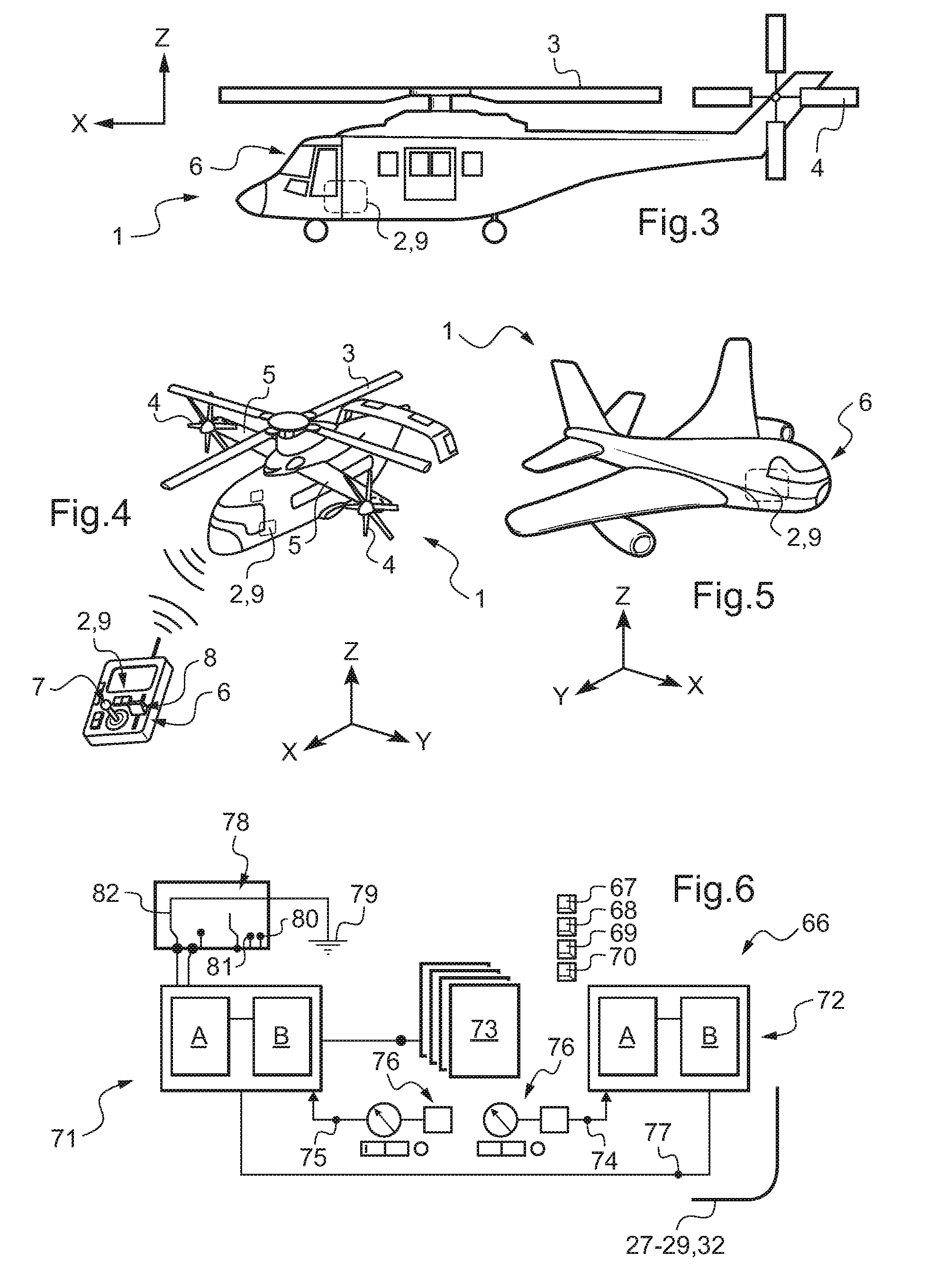Highly representative real-time simulation of an avionics system
a real-time simulation and avionics technology, applied in the field of aviation, can solve the problems of avionics simulation, the diversity of their components, and the need for processing capacity and a number of processors on the workstation used for simulation, and achieve the effect of simple, fluid and efficien
- Summary
- Abstract
- Description
- Claims
- Application Information
AI Technical Summary
Benefits of technology
Problems solved by technology
Method used
Image
Examples
Embodiment Construction
[0135]Embodiments and implementations of the invention are described below.
[0136]After FIGS. 1 and 2 (summarized above), in FIGS. 3 to 5 in particular, reference 1 is an overall reference to an aircraft. The aircraft 1 includes at least one avionics system 2 that has been subjected to simulation in accordance with the invention, as described below.
[0137]FIGS. 3 to 5 also show three mutually orthogonal directions X, Y, and Z. In aviation, the direction X generally corresponds to the roll axis of the aircraft 1.
[0138]Another direction Y is a transverse direction and corresponds to the widths or lateral dimensions of the structures described. The longitudinal direction X and the transverse direction Y are sometimes said to be horizontal, for simplification purposes.
[0139]A third direction Z referred to as the elevation direction corresponds to the height dimensions of the structures described. Sometimes the elevation direction Z is said to be vertical.
[0140]In FIG. 3, the aircraft 1 of...
PUM
 Login to View More
Login to View More Abstract
Description
Claims
Application Information
 Login to View More
Login to View More - R&D
- Intellectual Property
- Life Sciences
- Materials
- Tech Scout
- Unparalleled Data Quality
- Higher Quality Content
- 60% Fewer Hallucinations
Browse by: Latest US Patents, China's latest patents, Technical Efficacy Thesaurus, Application Domain, Technology Topic, Popular Technical Reports.
© 2025 PatSnap. All rights reserved.Legal|Privacy policy|Modern Slavery Act Transparency Statement|Sitemap|About US| Contact US: help@patsnap.com



